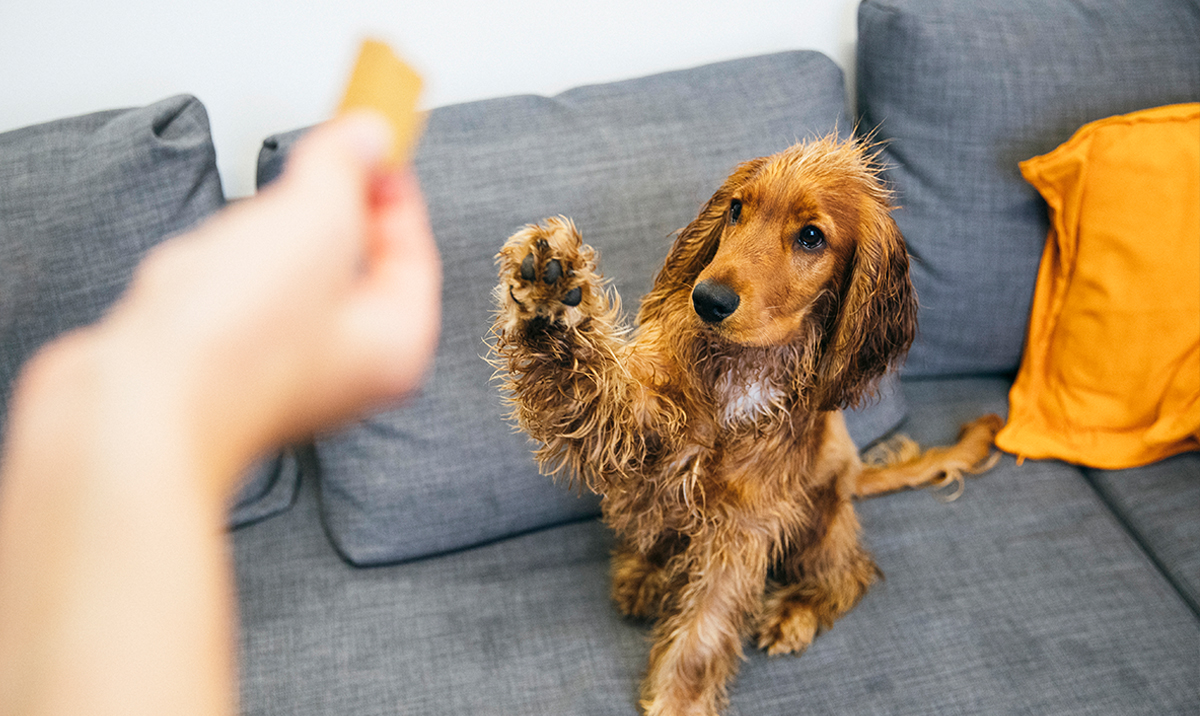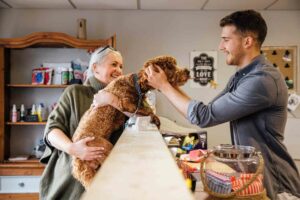Training shouldn’t be a chore or a stressful exercise for either the dog or owner. In order to get the best results from your training sessions, ensure the following:
Short and sweet sessions
A 3-5min session (depending on your dog’s training history) is more than enough. By all means, you can do multiple short sessions in a day, but keeping sessions short helps to keep your dog’s attention, and leaves them wanting MORE!
A familiar, non-distracting environment
Remove all possible distractions (noises, toys, people, other pets etc) to ensure YOU are your dog’s one and only focus. Pick a room in the house such as the living room or a bedroom to start any new activities. As your dog progresses, you can change up the environment as a way to challenge their skills.
Yummy treats or fun toys
Be sure to have a treat pouch or a container of food treats on hand filled with small pieces (size of a fingernail) of yummy, SOFT treats. Your dog’s regular kibble, or higher value treats such as “training treats” or cooked chicken breast are good choices so the dog can eat them quickly and easily and keep their head up and attention on you. If your dog is not overly bothered by food as a reward, toys also work! For best results with treats, don’t train after a meal.
Training is fun
It is important to make training sessions a positive activity. We all get frustrated and have varying limits of patience, but for best results for pup; end the session and come back to it another time if it isn’t going to plan. Positive reinforcement based techniques get the best long-term results.
End training with play
Brain work can be exhausting! Dogs retain new information better by engaging in play after a training session. It works as a great reinforcer and continues to build a positive association to a training session.
What does ‘training’ involve
Training can involve ANYTHING you wish to teach your dog. Most of us don’t train for competitions or shows which takes the pressure off. Training can involve; obedience and manners, impulse control, agility work, scent work, hide and seek, tricks, assistance work … the list goes on! While the basic commands (sit, stay, drop/down, come) are important to know, you can make them fun and challenging by jazzing them up!
Advice is general only. Each dog is different so the individual results will vary. Any extreme behavioural problems should be referred to a behavioural vet or behavioural specialist.
Pet insurance can help by covering a portion of the eligible vet bill if the unexpected happens. Because it is difficult to predict the costs of veterinary care, it can help to have measures in place to help prepare for the unexpected. Check out our partner network and explore our policy tools to find a pet insurance policy.
Not all conditions or items are covered by Pet Insurance. Refer to the applicable Product Disclosure Statement for information about coverage and exclusions.








